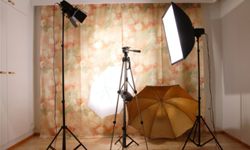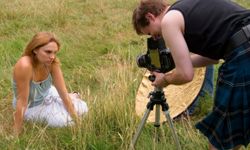With all of the technology available, taking great photographs should be a snap, right? After all, today's cameras have technology that lets them find and focus on faces, reduce red eye and compensate for most lighting situations. Still, anyone who has ever had a picture turn out less than perfect can tell you that cameras aren't perfect, no matter how advanced they are.
While you or your camera can't do anything about the fact that your Aunt Ida has a giant hairy mole or that Uncle Mort wears truly hideous sweaters, you can take some steps to make sure that the pictures you take are the best they can be. Much of a picture's quality comes from how well it's lit. By taking a few simple steps to make sure the lighting in your photographs matches up with the kind of picture you want to take, you can really improve the pictures you take. Who knows? You might even make Ida's mole or Mort's sweaters look a little better.
Advertisement
Keep reading to learn 5 ways you can use proper lighting to take better pictures.





